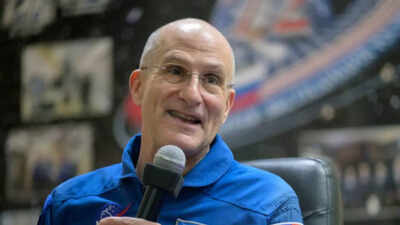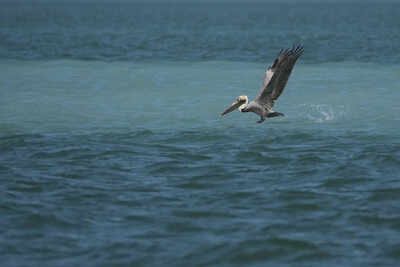NASA's Lucy Mission Prepares for Crucial Flyby of Asteroid Donaldjohanson

The Lucy mission, a groundbreaking initiative by NASA, is currently embarked on a remarkable 12-year journey designed to delve into a unique group of asteroids known as the Trojan asteroids. These fascinating celestial bodies trail behind and lead Jupiter as it orbits the Sun. As the spacecraft progresses towards its destination, it is gearing up for its second significant encounter with a different asteroid, providing critical practice for the primary objectives of the mission.
On April 20, at precisely 1:51 p.m. Eastern Time, NASAs Lucy spacecraft is set to execute a flyby of the small main belt asteroid named Donaldjohanson. The spacecraft will approach the asteroid closely, coming within an astonishingly near distance of 596 miles (or 960 kilometers) from the target. This marks Lucys second encounter with an asteroid and involves a much more complex maneuver compared to its first flyby. NASA has referred to this event as a comprehensive dress rehearsal for Lucys main mission, underscoring its significance in preparing for future endeavors.
Lucy first identified Donaldjohanson back in February and has since been diligently tracking the asteroid for the past two months to ensure a successful flyby. Named after the discoverer of the famous Lucy hominid fossil, Donaldjohanson is a carbonaceous asteroid measuring approximately 2.5 miles (4 kilometers) in width. Notably, this asteroid is a remnant from a collision that occurred around 150 million years ago, making it one of the youngest main belt asteroids that has ever been visited by a spacecraft.
While Donaldjohanson is not classified as a Trojan asteroid, its location provides a convenient opportunity for the Lucy spacecraft to make a brief detour on its journey to the Jovian system. This upcoming flyby represents a valuable chance for the mission team to assess Lucys systems while also conducting scientific observations using all three of its onboard scientific instruments.
In preparation for the flyby, the spacecraft will begin to orient itself in the direction of the asteroid approximately 30 minutes before the anticipated close approach. During this critical time, Lucys high-gain antenna, which is essential for communication with ground control, will be pointed away from Earth, which will temporarily halt communication. Following this orientation, Lucy will operate autonomously, rotating to maintain a clear view of Donaldjohanson using its terminal tracking system. The spacecraft will then utilize its scientific instruments to perform observation sequences that closely resemble those planned for when it reaches the Trojan asteroids.
Approximately 40 seconds before the closest approach, Lucy will cease tracking Donaldjohanson to safeguard its sensitive instruments from the intense sunlight that will be present during the flyby. "If you were sitting on the asteroid watching the Lucy spacecraft approach, you'd have to shield your eyes from the Sun while waiting for Lucy to appear from the glare. After Lucy passes the asteroid, the positions will be reversed, so we must shield the instruments in the same way," explained Michael Vincent of the Southwest Research Institute (SwRI) in Boulder, Colorado, who serves as the encounter phase lead for the mission. These instruments are designed to photograph objects illuminated by sunlight 25 times dimmer than at Earth, so looking toward the Sun could damage our cameras.
After successfully navigating the closest approach, Lucy will reorient its solar arrays back toward the Sun to ensure optimal power for its continued journey. The spacecraft is expected to re-establish communication with Earth about an hour after the flyby, with hopes of transmitting back the valuable data it has gathered. However, due to the vast distance between Lucy and Earth, the team must exercise patience, as it will take several days for the data to be received.
One of the peculiar aspects to consider with these deep-space missions is how slow the speed of light is, Vincent noted. Lucy is 12.5 light minutes away from Earth, meaning it takes that long for any signal we send to reach the spacecraft. Then, it takes another 12.5 minutes before we receive Lucys response confirming that our command was heard. Therefore, when we command the data playback following the closest approach, it takes a total of 25 minutes from the time we send the request to actually receive any images back on Earth.
Launched in October 2021, the Lucy spacecraft achieved its first flyby of the diminutive main belt asteroid Dinkinesh in November 2023. This initial encounter exceeded all expectations, revealing a binary pair, with the discovery of a tiny satellite orbiting closely around Dinkinesh.
The primary goal of the Lucy mission is to investigate the Trojan asteroids, a collection of rocky bodies that accompany Jupiter in its solar orbit. The spacecraft is slated to commence its tour of these intriguing Trojan asteroids in 2027, with initial visits planned to Eurybates and its binary partner Queta, followed by Polymele along with its binary partner, Leucus, Orus, and the binary pair Patroclus and Menoetius.
Every asteroid has a different story to tell, and these stories together illustrate the history of our solar system, stated Tom Statler, the Lucy mission program scientist at NASA. The fact that each new asteroid we visit continues to astonish us highlights that we are only beginning to grasp the depth and richness of that history. Observations from telescopes suggest that Donaldjohanson is poised to unveil an interesting narrative, and I am fully expecting to be surprisedonce again.
























